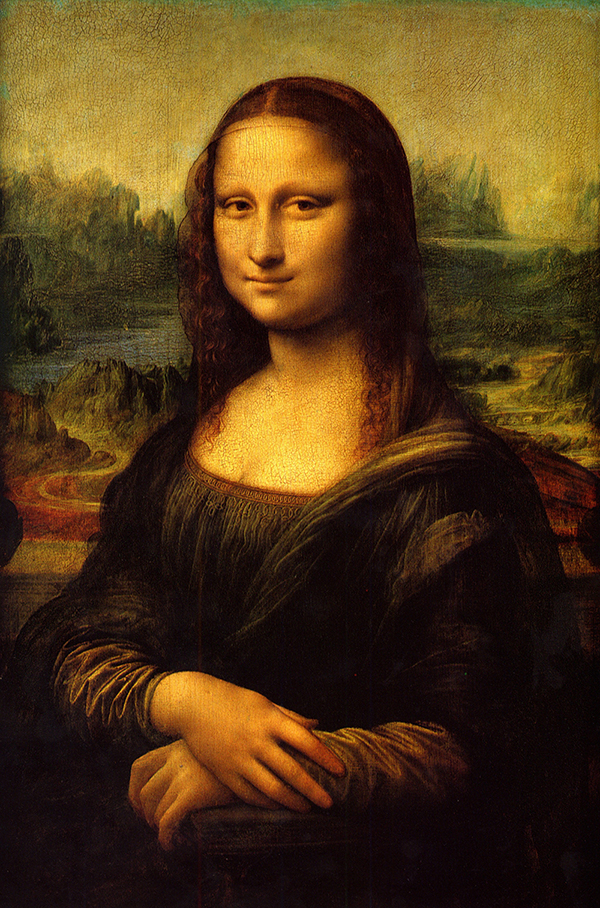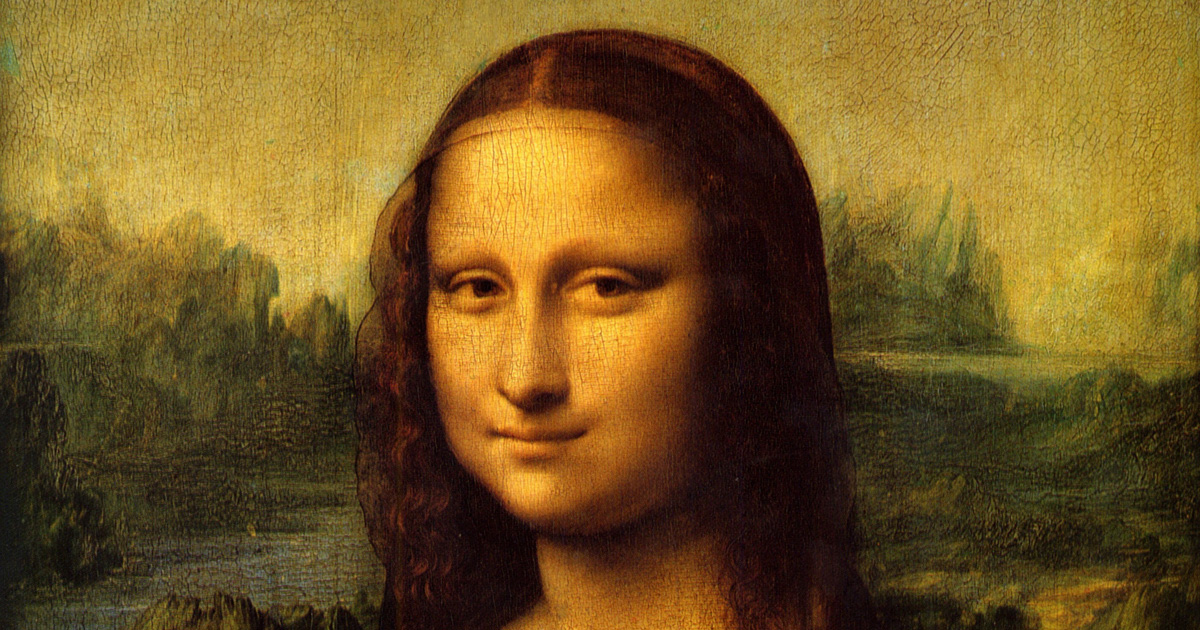Mona Lisa — Leonardo da Vinci
Title of the painting: Mona Lisa (La Joconde / La Gioconda)
Author: Leonardo da Vinci
Country: Italy
Year of creation: c. 1503–1506 (probably reworked until 1517)
Technique: Oil on poplar panel
Dimensions: 77 × 53 cm
Exhibition location: Louvre, Denon Wing, Room 711
Category: Portrait
Style / School: High Renaissance

Context of Creation
The “Mona Lisa” was painted by Leonardo in Florence on commission from Francesco del Giocondo — it is believed to be a portrait of his wife, Lisa Gherardini. However, debates continue to this day: is it truly her, or an idealised image of womanhood itself? Leonardo never delivered the painting to the patron — it remained with him until his death and came to France together with the artist.
Plot and Composition
The portrait depicts a woman with a gentle smile, looking directly at the viewer. She sits in the classical “three-quarters” pose, hands folded. Behind her stretches a fantastical, slightly surreal landscape with winding roads, water, and mist. The composition is built so that Mona Lisa’s gaze “follows” you from any angle. The smile is elusive. It seems to vanish the moment you try to grasp it.
Style and Technique
Leonardo used the sfumato technique — soft transitions between light and shadow, making the face appear lifelike and three-dimensional. No clear contour, no line — only air that breathes. In this portrait, da Vinci reached a new height of illusion of life. And even the small size does not diminish the effect of presence.
The Painting’s Fate
After Leonardo’s death, the painting remained in France. It was valued by kings, kept in palaces, and eventually — it settled in the Louvre. In 1911, it was stolen — at a time when it was not yet world-famous. This theft became a media sensation, and two years later, when the “Mona Lisa” was returned, it turned into a legend. Today it is the symbol of the Louvre and perhaps of Western art itself.
Personal View

I did not expect it to be so small. And so… alive. Amidst the crowd, behind glass, under guard — and yet something deeply personal happens between us. Her smile is not a trick. It is a mirror.
She does not resemble any female image. She does not seduce, does not evoke pity, does not play a role. She simply is. A woman, looking. At you. And suddenly you are no longer sure who is observing whom.
If this article resonated with you — share it with those inspired by art and beauty.

